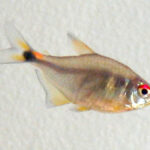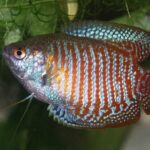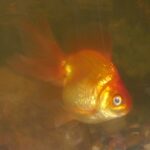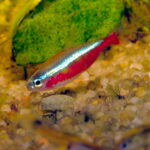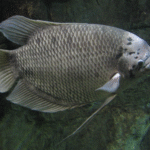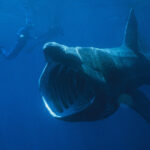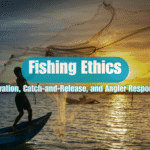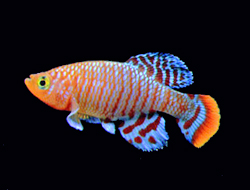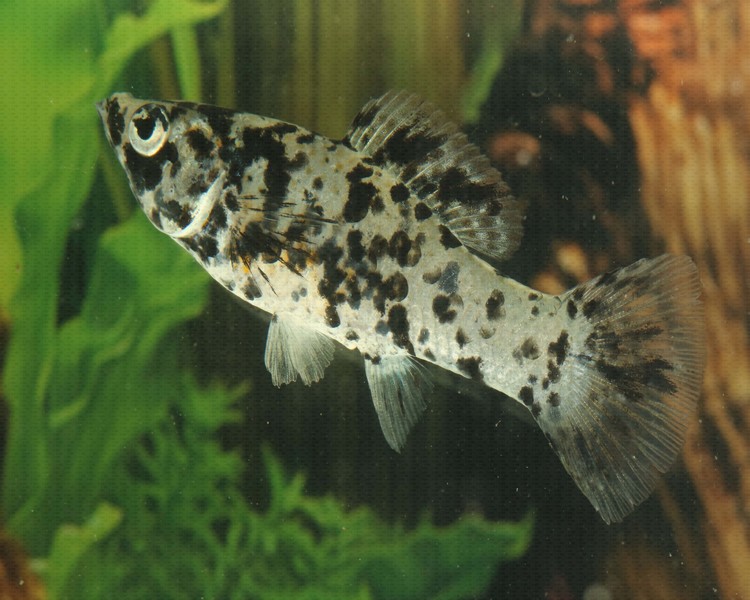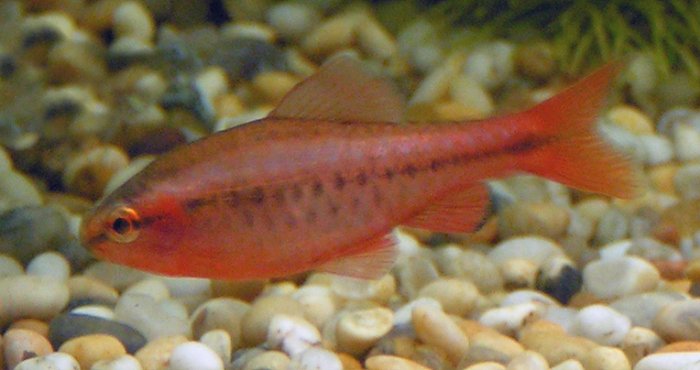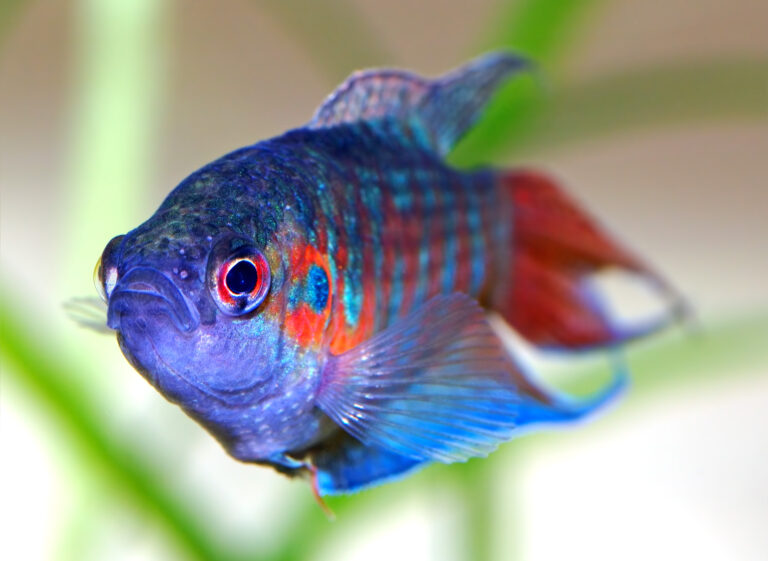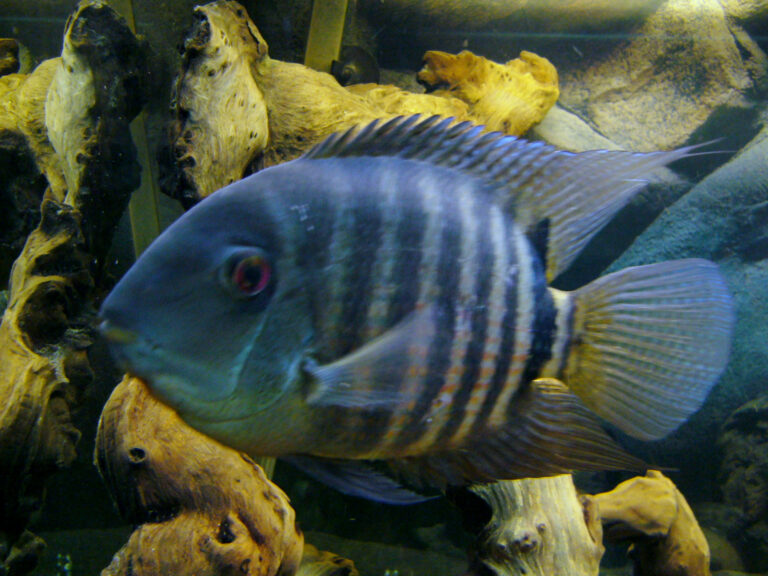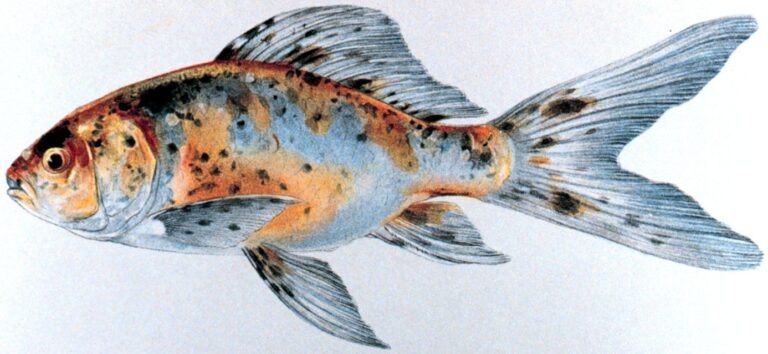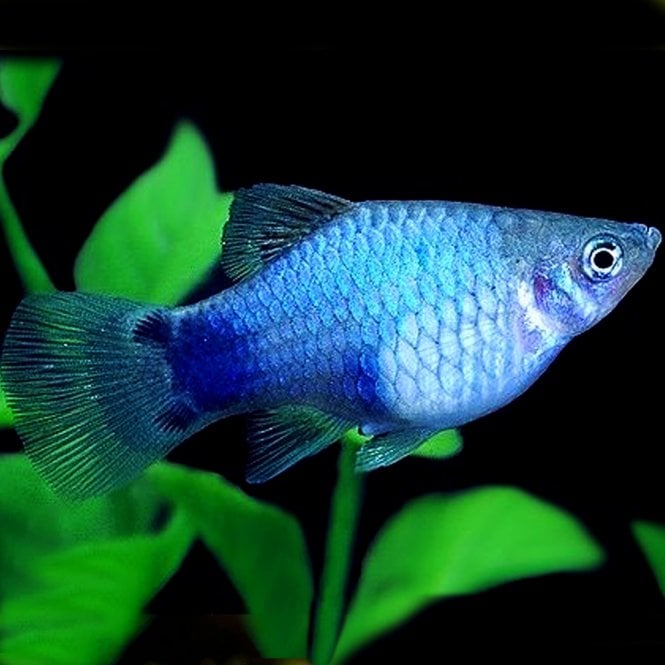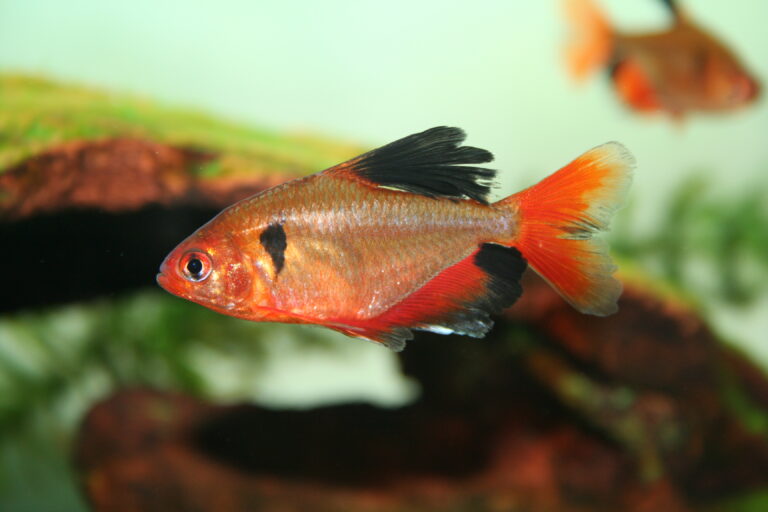Rainbowfish
By Ryan Maron | Last Modified: June 7, 2025
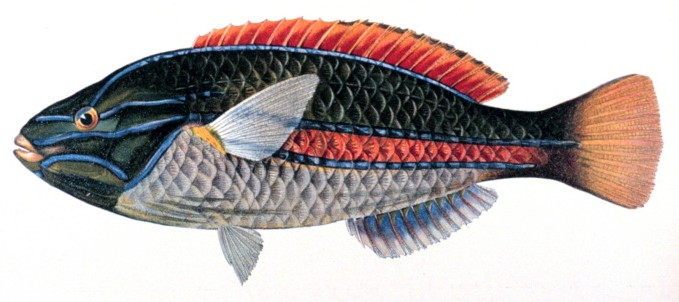
Rainbowfish represent one of the most visually striking and ecologically significant groups of freshwater fish found across Australia, New Guinea, and Indonesia. These vibrant schooling fish, belonging primarily to the family Melanotaeniidae, play crucial roles as both predators and prey within their native aquatic ecosystems. The common name “rainbowfish” encompasses over 70 species, with the most well-known being Melanotaenia boesemani, commonly called Boeseman’s rainbowfish. These fish serve as important indicators of ecosystem health in their native watersheds while simultaneously supporting a thriving international aquarium trade worth millions of dollars annually. Within their natural habitats, rainbowfish function as mid-level predators, controlling insect populations while providing essential food sources for larger predatory fish and birds.
| Feature | Details |
| Common Name | Rainbowfish |
| Scientific Name | Melanotaenia boesemani (primary species) |
| Family | Melanotaeniidae |
| Typical Size | 5-15 cm (2-6 inches), 10-45 grams |
| Habitat | Freshwater streams, rivers, and lakes |
| Diet | Omnivorous – insects, crustaceans, plant matter |
| Distribution | Australia, New Guinea, Indonesia |
| Conservation Status | Varies by species – Least Concern to Critically Endangered |
Taxonomy & Classification
Rainbowfish belong to the order Atheriniformes, which includes silversides and related species. The family Melanotaeniidae contains the majority of true rainbowfish species, though some species are classified within related families including Pseudomugilidae and Telmatherinidae. The genus Melanotaenia represents the largest group, containing over 100 recognized species and subspecies distributed across the Indo-Pacific region.
Taxonomic classification has undergone significant revision in recent decades as molecular studies have revealed previously unknown evolutionary relationships. The subfamily Melanotaeniinae includes seven primary genera: Melanotaenia, Glossolepis, Chilatherina, Cairnsichthys, Rhadinocentrus, Iriatherina, and Pelangia. Each genus exhibits distinct morphological and ecological characteristics that reflect their adaptation to specific environmental niches.
Recent phylogenetic analyses conducted by Australian ichthyologists have identified numerous cryptic species within traditional rainbowfish classifications. These discoveries highlight the remarkable diversity within this family and underscore the importance of continued taxonomic research in understanding their evolutionary history.
Physical Description
Rainbowfish exhibit remarkable morphological diversity while maintaining several characteristic features that distinguish them from other freshwater fish families. Most species display elongated, laterally compressed bodies with relatively small heads and large eyes positioned high on the skull. Their dorsal fins are typically divided into two distinct sections, with the anterior portion containing rigid spines and the posterior section composed of soft rays.
The most striking feature of rainbowfish is their iridescent coloration, which gives the group its common name. Males generally display more vibrant colors than females, particularly during breeding seasons when chromatic intensity reaches peak levels. Boeseman’s rainbowfish exemplifies this sexual dimorphism, with mature males exhibiting brilliant blue anterior regions transitioning to golden-yellow posterior sections, while females maintain more subdued silvery tones with subtle color hints.
Scale patterns vary significantly among species, with most rainbowfish possessing relatively large cycloid scales that reflect light to create their characteristic shimmering appearance. Body size ranges from the diminutive Pseudomugil species at 2-3 centimeters to larger Glossolepis species reaching 15 centimeters in total length. Fin morphology also shows considerable variation, with some species developing elaborate finnage extensions during breeding periods.
Habitat & Distribution
Rainbowfish occupy diverse freshwater habitats throughout their native range, which spans the Australian continent, New Guinea, and portions of the Indonesian archipelago. Their distribution patterns reflect ancient geological processes, with many species endemic to specific river systems or lake complexes that became isolated during periods of sea level fluctuation.
Australian rainbowfish species inhabit environments ranging from fast-flowing mountain streams to slow-moving lowland rivers and permanent billabongs. Water parameters in these habitats typically feature neutral to slightly alkaline pH levels between 6.5 and 8.0, with temperatures varying seasonally from 18°C to 30°C depending on geographic location and elevation.
New Guinean species often occupy similar ecological niches but frequently encounter different water chemistry conditions due to regional geological differences. Many inhabit areas with elevated mineral content resulting from volcanic activity, while others thrive in softer waters derived from ancient mountain watersheds. Lake-dwelling populations, such as those found in Lake Sentani and Lake Tebera, have evolved distinct characteristics reflecting their unique environmental pressures.
Human activities have significantly altered rainbowfish distribution patterns in recent decades. Agricultural development, mining operations, and urban expansion have fragmented many populations and eliminated some species from portions of their historical ranges. Climate change effects, including altered precipitation patterns and increased drought frequency, continue to impact remaining populations across their native distribution.
Diet & Feeding Behavior
Rainbowfish demonstrate omnivorous feeding strategies that vary seasonally and reflect local prey availability. Their diet consists primarily of aquatic and terrestrial insects, small crustaceans, zooplankton, algae, and various plant materials including seeds and detritus. This dietary flexibility has contributed significantly to their ecological success across diverse habitat types.
Feeding behavior patterns show distinct temporal variations, with peak activity occurring during dawn and dusk periods when insect emergence rates reach maximum levels. Rainbowfish employ both surface feeding and mid-water foraging techniques, often forming loose aggregations that move systematically through productive feeding areas. Their upturned mouths facilitate efficient surface feeding, allowing them to capture fallen insects and emerging aquatic invertebrates.
Seasonal dietary shifts reflect changes in prey abundance and environmental conditions. During wet seasons, increased terrestrial insect availability leads to higher protein intake, supporting rapid growth and reproductive development. Dry season feeding relies more heavily on algae, detritus, and aquatic invertebrates as terrestrial prey becomes less accessible.
Juvenile rainbowfish exhibit different feeding preferences compared to adults, focusing primarily on microscopic zooplankton, small insects, and organic particles. This ontogenetic dietary shift reduces intraspecific competition and maximizes resource utilization within shared habitats. Adult feeding behavior also influences ecosystem dynamics through their role in controlling insect populations and transferring nutrients between aquatic and terrestrial environments.
Behavior & Adaptations
Rainbowfish exhibit complex social behaviors centered around schooling dynamics that provide protection from predators while maximizing foraging efficiency. School sizes vary from small aggregations of 10-20 individuals to massive formations containing several hundred fish during spawning migrations or when concentrated food sources become available.
Territorial behavior emerges during breeding seasons when males establish and defend spawning sites against competitors. These territories typically encompass areas with suitable substrate for egg deposition and adequate cover for protecting developing embryos. Male aggression intensity correlates with territory quality and female availability, with dominant individuals occupying prime spawning locations.
Communication among rainbowfish involves visual displays, body positioning, and subtle chemical cues. Males develop enhanced coloration and perform elaborate courtship rituals that include fin displays, rapid swimming patterns, and specific body orientations designed to attract females and signal reproductive readiness.
Physiological adaptations enable rainbowfish to thrive in variable environmental conditions. Their efficient osmoregulatory systems allow them to tolerate moderate salinity fluctuations in estuarine environments, while behavioral thermoregulation helps them cope with temperature variations by seeking optimal microhabitats within their home ranges.
Anti-predator adaptations include rapid burst swimming capabilities, cryptic coloration patterns, and coordinated schooling responses to perceived threats. When alarmed, rainbowfish can achieve swimming speeds exceeding 10 body lengths per second, allowing them to escape most predatory attacks through explosive acceleration and unpredictable directional changes.
Reproduction & Life Cycle
Rainbowfish reproductive strategies demonstrate remarkable diversity across species, with most exhibiting seasonal spawning patterns that coincide with optimal environmental conditions. The majority of species are broadcast spawners that deposit adhesive eggs on vegetation, submerged structures, or specially prepared spawning sites constructed by males.
Sexual maturity typically occurs between 6-12 months of age, depending on species, environmental conditions, and nutritional status. Males generally mature slightly earlier than females and develop more pronounced secondary sexual characteristics including enhanced coloration, extended finnage, and increased body depth that signals reproductive readiness to potential mates.
Spawning behavior follows predictable patterns across most species, beginning with male territory establishment and nest preparation. Males select spawning sites with appropriate substrate and adequate water flow to ensure proper egg development and oxygenation. Courtship rituals involve complex displays where males showcase their vibrant colors while performing specific swimming patterns designed to attract females.
Egg development varies significantly among species and environmental conditions, with incubation periods ranging from 7-21 days at optimal temperatures. Newly hatched larvae remain attached to egg remnants for 2-3 days before achieving free-swimming status and beginning active feeding on microscopic organisms.
Parental care is generally absent in most rainbowfish species, though some provide limited protection through territory defense during the early stages of egg development. Juvenile survival rates depend heavily on environmental factors including predator density, food availability, and habitat stability during critical early growth periods.
Predators & Threats
Natural predators of rainbowfish include larger native fish species, aquatic reptiles, waterbirds, and various invertebrate predators that target different life stages. Adult rainbowfish face predation from species such as Murray cod, Australian bass, and various native perch species that share their habitats.
Introduced predatory fish represent significant threats to many rainbowfish populations. Species such as largemouth bass, which have been introduced to many Australian waterways, can dramatically reduce native rainbowfish numbers through direct predation and competition for resources. These introductions have contributed to population declines in several endemic species.
Habitat degradation poses the most severe long-term threat to rainbowfish populations. Agricultural runoff introduces elevated nutrient levels that trigger algal blooms and reduce water quality, while sedimentation from erosion clogs spawning substrates and reduces egg survival rates. Dam construction and water diversion projects fragment populations and alter natural flow regimes essential for successful reproduction.
Climate change impacts include rising water temperatures, altered precipitation patterns, and increased frequency of extreme weather events. These changes affect spawning timing, food availability, and habitat suitability across species ranges. Some populations have already shown signs of stress related to prolonged drought conditions and elevated water temperatures.
Pollution from mining activities, urban development, and industrial sources introduces toxic compounds that can cause direct mortality or sublethal effects including reduced reproductive success and increased disease susceptibility. Heavy metals, pesticides, and other contaminants accumulate in rainbowfish tissues and can be transferred through food webs to affect entire ecosystem health.
Conservation Status
Conservation status varies dramatically among rainbowfish species, with several facing critical threats while others maintain stable populations. The International Union for Conservation of Nature has assessed numerous species, with classifications ranging from Least Concern to Critically Endangered depending on population trends, habitat quality, and threat severity.
Several species face imminent extinction risk, including the Lake Eacham rainbowfish (Melanotaenia eachamensis) and Running River rainbowfish (Melanotaenia sp.), which exist in extremely limited ranges vulnerable to catastrophic events. These species require immediate conservation intervention to prevent extinction.
Successful conservation programs have been implemented for some threatened species through collaborative efforts between government agencies, research institutions, and aquarium organizations. Captive breeding programs maintain genetic diversity while providing insurance populations against wild extinction events.
Habitat restoration projects focus on improving water quality, removing invasive species, and reestablishing natural flow regimes in degraded waterways. These initiatives show promising results but require long-term commitment and substantial financial resources to achieve meaningful population recovery.
Research priorities include comprehensive population surveys, genetic diversity assessments, and ecological studies to better understand species requirements and inform management decisions. Continued monitoring programs track population trends and evaluate conservation strategy effectiveness across multiple species and habitats.
Human Interaction
The international aquarium trade represents the primary form of human interaction with rainbowfish, generating significant economic activity while raising conservation concerns. Wild-caught specimens command premium prices due to their vibrant colors and peaceful temperament, making them highly sought after by aquarium enthusiasts worldwide.
Sustainable aquaculture operations have developed to meet market demand while reducing pressure on wild populations. These facilities produce millions of rainbowfish annually through controlled breeding programs that maintain genetic diversity and fish health standards. Commercial breeding has also enabled the development of selectively bred varieties with enhanced colors and fin characteristics.
Indigenous communities throughout rainbowfish ranges have traditional relationships with these species that include subsistence fishing, cultural practices, and environmental stewardship. Traditional ecological knowledge contributes valuable insights for modern conservation efforts and habitat management strategies.
Recreational fishing activities rarely target rainbowfish directly due to their small size, but these species often comprise important components of native fish communities valued by conservation-minded anglers. Educational programs highlighting rainbowfish ecological importance help build support for habitat protection and restoration initiatives.
Scientific research on rainbowfish contributes to broader understanding of freshwater ecosystem dynamics, evolutionary biology, and conservation science. These studies provide essential information for managing aquatic resources and protecting biodiversity in regions facing increasing environmental pressures.
Interesting Facts
Rainbowfish possess the remarkable ability to rapidly change their coloration in response to social situations, environmental conditions, and emotional states. This chromatic plasticity exceeds that of many other freshwater fish families and contributes to their complex social interactions and predator avoidance strategies.
Some rainbowfish species exhibit temperature-dependent sex determination, where incubation temperature during egg development influences the ratio of males to females in emerging populations. This characteristic has important implications for population dynamics and conservation breeding programs.
The Lake Tebera rainbowfish (Melanotaenia herbertaxelrodi) represents one of the most geographically isolated fish populations on Earth, having been separated from related species for over one million years. This isolation has resulted in unique evolutionary adaptations found nowhere else in the rainbowfish family.
Rainbowfish demonstrate surprising longevity for small freshwater fish, with some species living over eight years in optimal conditions. This extended lifespan contributes to their reproductive success and population stability in undisturbed habitats.
Several rainbowfish species serve as indicator organisms for ecosystem health, with population changes reflecting broader environmental conditions. Scientists monitor these populations to assess the effectiveness of conservation efforts and detect emerging environmental threats.
The discovery of new rainbowfish species continues at a remarkable rate, with researchers describing several new species each year. Advanced genetic techniques reveal cryptic diversity that traditional morphological studies failed to detect, suggesting that total species diversity may be significantly higher than currently recognized.
Frequently Asked Questions
How do rainbowfish contribute to their ecosystem?
Rainbowfish serve as crucial links in freshwater food webs by controlling insect populations while providing food for larger predators. They transfer nutrients between aquatic and terrestrial environments through their feeding activities and support biodiversity by maintaining ecological balance in their native habitats. Their presence indicates healthy ecosystem conditions, making them valuable indicator species for environmental monitoring programs.
What makes rainbowfish different from other colorful freshwater fish?
Rainbowfish possess unique iridescent scales that create their characteristic shimmering appearance, unlike the fixed pigmentation patterns found in most other colorful fish species. Their divided dorsal fins, upturned mouths, and schooling behavior distinguish them morphologically and behaviorally from similar groups. Additionally, their ability to rapidly change coloration in response to environmental and social stimuli exceeds that of most freshwater fish families.
Why are some rainbowfish species endangered while others are not?
Species with extremely limited distributions, such as those endemic to single lake systems or small river basins, face higher extinction risks than widespread species. Human activities including habitat destruction, water pollution, and introduced predators disproportionately impact isolated populations that cannot recover through immigration from other areas. Climate change effects and small population sizes also increase vulnerability to extinction for geographically restricted species.
Can rainbowfish survive in different water conditions than their native habitats?
Most rainbowfish species demonstrate moderate tolerance for water parameter variations, allowing them to adapt to slightly different conditions than those found in their native ranges. However, extreme changes in pH, temperature, or mineral content can cause stress and health problems. Their adaptability has contributed to their success in the aquarium trade but does not guarantee survival in significantly altered natural habitats where multiple environmental stressors may combine to exceed their tolerance limits.
Conclusion
Rainbowfish represent a remarkable example of freshwater fish diversity and ecological adaptation, serving essential roles in their native aquatic ecosystems while facing mounting conservation challenges. Their vibrant beauty and complex behaviors have captured human interest, leading to both appreciation through the aquarium trade and scientific study that advances our understanding of evolutionary biology and ecosystem dynamics. Protecting rainbowfish populations requires continued research, habitat restoration, and international cooperation to ensure these magnificent species continue to thrive in their native waters for future generations to study and appreciate.
Share The Article:
More Fish Species:
-
Killifish
Killifish represent one of the most diverse and ecologically significant groups of small freshwater and brackish water fish, comprising…
-
Marble Molly
The Marble Molly (*Poecilia latipinna*) stands as one of the most recognizable and widely distributed ornamental fish species in…
-
Cherry Barb
The Cherry Barb (*Puntius titteya*) stands as one of the most recognizable and ecologically significant small cyprinid species in…
-
Paradise Fish
The Paradise Fish stands as one of the most remarkable representatives of the labyrinth fish family, captivating aquarists and…
-
Lyretail Molly
The Lyretail Molly (*Poecilia latipinna*) stands as one of the most recognizable and ecologically significant freshwater fish species in…
-
Severum Cichlid
The Severum Cichlid represents one of South America’s most recognizable and ecologically significant freshwater fish species. Known scientifically as…
Discover
-
How to Fish for Bluegill: 2025 Complete Guide
Bluegill might not be the biggest fish in the pond, but they sure make up for it in fight…
-
Alaska Salmon Fishing: Planning Your Trip to the Last Frontier
I still remember the first time I hooked into a Kenai River king salmon. It was July 15, 2019,…
-
Best Time to Go Fishing: Timing Tips for Bigger Catches
If there’s one question I get asked more than any other, it’s about timing. When should you cast that…
-
Utah Fishing License Guide: Costs, Requirements & Hidden Tips for 2025
When I first planned a fishing trip to Utah’s beautiful waters about a decade ago, figuring out the licensing…
-
Mastering Fishing Casting Techniques: Complete Guide
Have you ever watched someone cast their line with perfect precision while you struggle to avoid tangling yours in…
-
Baja Sportfishing: Marlin, Tuna, and Dorado Tactics
The first time I ventured into Baja sportfishing waters, I did almost everything wrong. I chartered a boat out…
Discover
-
Diamond Tetra
The Diamond Tetra (Moenkhausia pittieri) stands as one of the most captivating freshwater fish species in the aquarium trade…
-
Best Fishing Lures for Walleye: Pro Secrets You Won’t Believe
Let me tell you something about walleye fishing that most anglers get completely wrong. After 30+ years of chasing…
-
Shubunkin Goldfish
The Shubunkin Goldfish (Carassius auratus) represents one of the most popular and visually striking varieties of goldfish kept in…
-
Blue Platy
The Blue Platy (Xiphophorus maculatus) stands as one of the most recognizable and culturally significant freshwater fish species in…
-
15 Panfish Fishing Secrets: Easy Catches for Beginners & Pros
You know what’s funny about panfish? These little fighters have probably hooked more new anglers than any other species,…
-
Serpae Tetra
The Serpae Tetra (Hyphessobrycon eques) stands as one of South America’s most recognizable freshwater aquarium species, distinguished by its…

